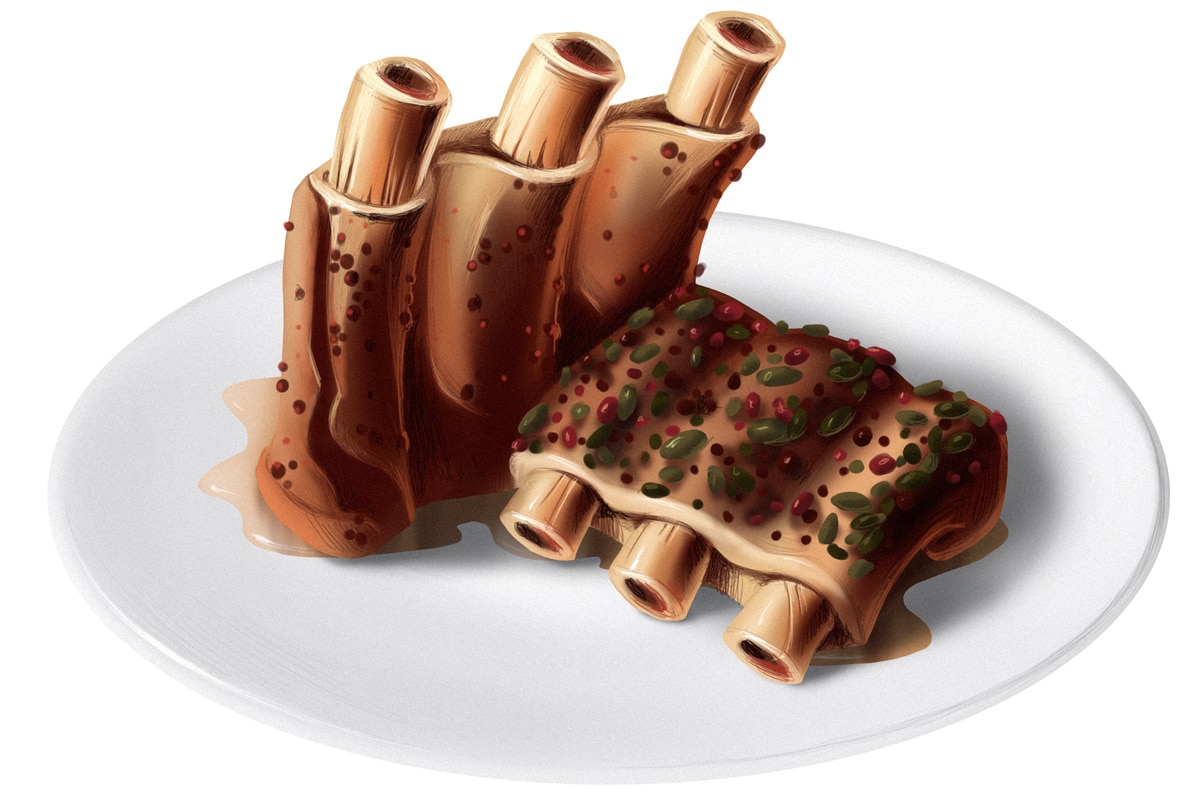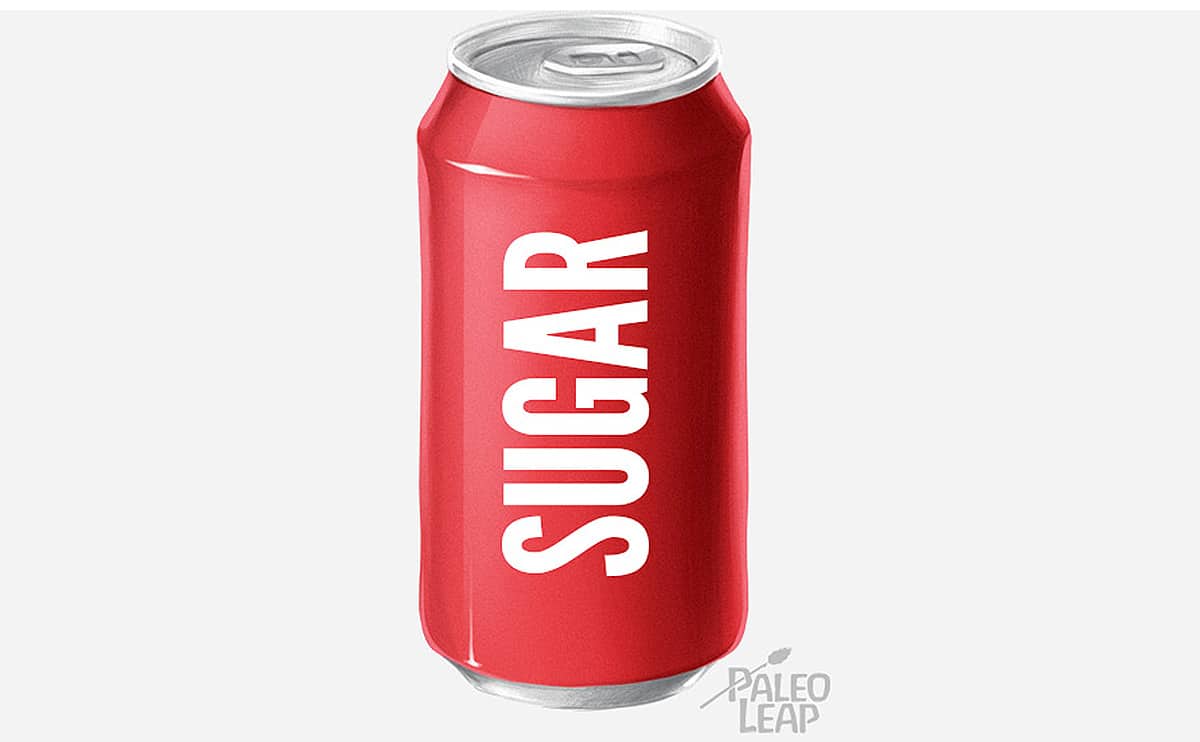If gout runs in your family, you’ve probably heard the advice to pass on all the animal protein, which would make Paleo difficult at best. But actually, there’s more to the story: instead of blaming meat, we might want to take a hard look at sugar instead.
What Is Gout?
Gout is a very painful type of inflammatory arthritis. The best-known symptom is pain in the big toe, but gout can also cause pain in any other joint. Less commonly, it can even cause kidney stones or other completely different symptoms. These problems can show up in “attacks” separated by periods without pain, or they can be chronic and continuous.
Gout is more common in men than in women, but rates in both sexes have been steadily increasing for the last couple of decades.
The root cause of gout is too much uric acid in the blood (hyperuricemia). Uric acid is actually one of the body’s primary antioxidants, but as always, it’s possible to get too much of a good thing. When there’s too much uric acid in the blood, it crystallizes, and the resulting solid crystals wind up in and around the joints (and occasionally in the kidneys, which is where the kidney stones come from).
Conventional wisdom holds that the best diet for preventing and treating gout is low in seafood and meat (especially organ meat), which sounds like it would pretty much take Paleo out of the running. But there’s actually more to the story than that…
Gout, Purines, and Animal Protein

First of all, it’s important to recognize that there actually is some support for the advice to cut down on meat and seafood.
For one thing, there’s the problem of association. Gout is a classic “disease of civilization:” ever since it was first named and described, it’s been recognized as a problem for people who have plenty of luxury food. Until very recently, meat was a luxury food, so it’s not hard to see how eating a lot of meat looked like the cause of gout.
With modern population research, we know that gout is indeed associated with (remember: this does not mean “caused by”!) meat intake. In this study, for example, “each additional daily serving of meat was associated with a 21 percent increase in the risk of gout, and each additional weekly serving of seafood was associated with a 7 percent increase in risk.”
And what’s more, there’s actually a reasonable explanation of why eating meat could make gout worse. Meat – especially organ meats and seafood – contains purines, chemical compounds that are broken down into uric acid. So eating more purine-rich food means more uric acid which means more gout…right?
Unfortunately, there are a few inconvenient problems with this theory:
- First of all, there’s the problem of vegetables. Even though most vegetables are low in purines, a few (like spinach, for example) have a significant amount. But in the NEJM study linked above and in this one (completely different authors and population), purine-rich vegetables weren’t associated with gout at all.
- Then there’s the fact that only about ⅓ of uric acid in the body comes from dietary purines; the other ⅔ is produced by the body itself. In other words, no matter how many purines you eat or don’t eat, the majority of uric acid is coming from somewhere else anyway.
This suggests that maybe focusing on purines is looking in the wrong place.
Gout, Alcohol, and Fructose
Instead of blaming dietary purines, let’s briefly entertain an alternate hypothesis and see whether it fits the facts better. What about the connection between gout and sugar (fructose)?
Just like purines, fructose increases the production of uric acid. But it also does something else: it reduces excretion. In terms of raising total uric acid levels, this is much worse, because it also affects the ⅔ of uric acid produced by the body itself. As this study puts it: “hyperuricemia in gout is most commonly the result of relative urate underexcretion.”
If you’re producing more uric acid (from purines or anything else) but then just peeing it all out again, you won’t be sick at all. Total uric acid levels will only rise if you can’t excrete the uric acid that you produce. Purine-rich foods won’t do that, but fructose will.

Then there’s the other supporting evidence:
- Gout is strongly associated with diabetes and metabolic syndrome. This suggests that there may be some kind of blood sugar connection, and there’s evidence that it goes both ways. Insulin resistance contributes to hyperuricemia, and hyperuricemia induces insulin resistance.
- Alcohol, which behaves a lot like fructose metabolically, also increases production and reduces excretion of uric acid – as anyone with gout could tell you after drinking a couple beers.
The fructose connection would also explain why purine-rich meat is associated with gout attacks, but purine-rich vegetables aren’t. Since red meat has been so constantly demonized in the US, the people who eat the most red meat are also the people who are least health-conscious: in other words, the people most likely to be eating a lot of sugar. The same goes for purine-rich organ meats: barring the Paleo crowd, the most common way to eat organ meats in the United States is probably fried gizzards and livers from places like KFC – probably accompanied by a giant drink of sugary soda. On the other hand, the people who eat a lot of purine-rich vegetables like spinach are the people least likely to be eating a lot of sugar.
Gary Taubes actually printed an unpublished chapter from his book Good Calories, Bad Calories about this here, if you’re interested in a more in-depth take. But the short version: it’s very possible that fructose and alcohol, not purine-containing foods, are the real dietary culprits behind gout.
Gout and Paleo
So with that said, what’s the Paleo recommendation for gout?
First and foremost, see a doctor. None of this is medical advice; it’s nothing but a set of suggestions to consider. Your doctor will be able to give you a much better opinion on what might and might not be right for you.
With that said, here are some suggestions based on what we know so far:
- To keep uric acid low, getting rid of fructose and beer is probably a better bet than going crazy over purine levels in meat.
- Crash dieting is bad news. Starvation can also contribute to hyperuricemia – and so can ketosis, which mimics starvation in several respects. Rapid weight loss often brings on gout attacks. If you’re going to lose weight with a family history of gout, take it slow and steady; save the water fasting and extreme low-carb diets for someone else.
- On the other hand, moderate weight loss is typically helpful. In this study, for example, weight loss improved gout symptoms.
- Eat more fresh vegetables (and fruits with low fructose levels): higher intake of Vitamin C may help control uric acid levels.
- If you tolerate dairy (not everyone does; it’s a Paleo gray area), it may be helpful in lowering levels of uric acid.
Again, none of this is intended as a substitute for a doctor. All the connections between food and gout are still tentative, and it’s possible that a diet low in meat will really help some people (whether it’s the purines or something else). But considering that so many people don’t get relief from dutifully cutting out purines (and that so many people do feel better eating a purine-rich Paleo diet), it’s also interesting to explore some other potential causes and therapies – and fructose looks like a very promising villain. At any rate, it’s not like reducing beer and sugar and eating more Vitamin C is ever going to hurt anyone, so at least it’s something to try!





Leave a Reply